The safety car is deployed when there is a dangerous situation on the track and it is not necessary to suspend the race. We explain when the safety car will be deployed and what regulations must be followed once the safety car is deployed.
Recently, in addition to the procedure for deployment and ending of the safety car and the prohibited actions during the safety car, the operation of Virtual Safety Car (VSC) in Formula 1 and Full Course Yellow (FCY) in WEC has started. Therefore it is difficult to understand motorsports regulations.
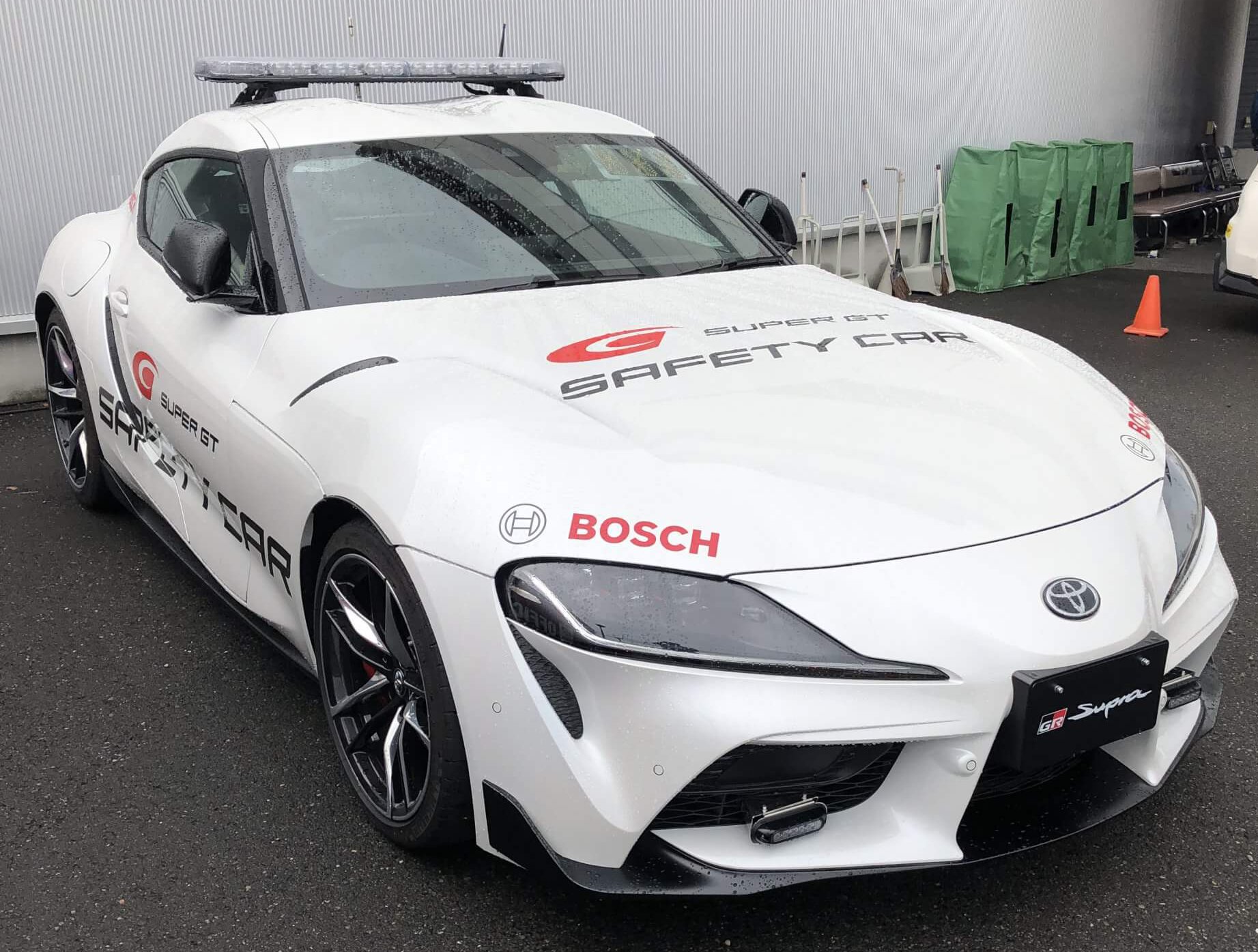
When the safety car is deployed
In case there is a dangerous situation such as a stopped vehicle on the course, or when it is judged that the racing car cannot run safely due to heavy rain, the safety car will be deployed.
Specific examples of the deployment of the safety car are follow.
- Cars stopped on the course due to accident or mechanical trouble.
- Cars that cannot restart due to an engine stall or spin stopped on the course.
- Occurrence of car fire
- It has risks continuation of race due to heavy rain
- Even if the stopped car is not on the course, it was judged that it is dangerous for course marshall to remove the stopped car.
- There is a large falling object on the course and it is considered difficult for the course marshal to remove
Example: An accident caused a car to stop on the course
If cars that are unable to drive due to an accident stops on the course, it is likely that the safety car will be deployed. Recently, even if cars are not on the course, the safety car is often deployed even when a work vehicle such as a wheel loader intervenes on the side of the course to remove the stopped cars.
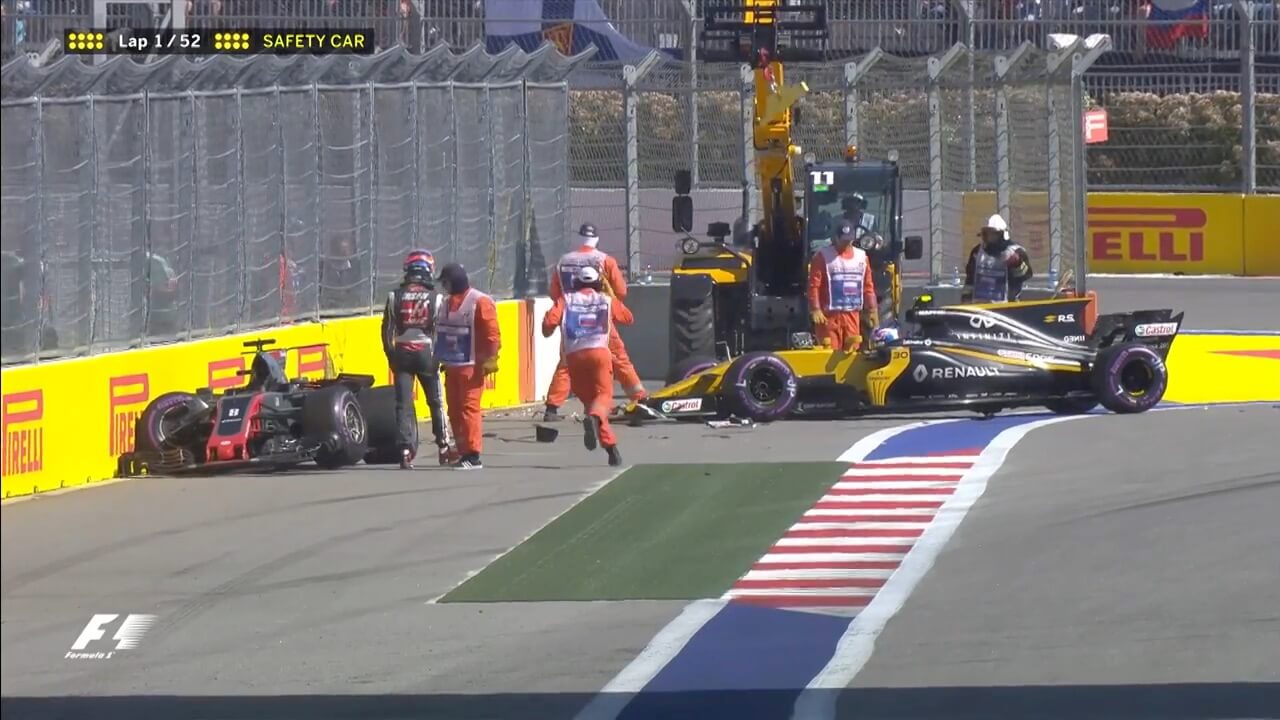
出典:youtube.com
Example: The car stopped on the course (engine stall)
Even if it is not an accident, the safety car may be deployed to safely remove cars whose engine has stalled from the course.

出典:youtube.com
2015 FIA Formula 1 Round 13 Singapore Grand Prix
In 2015 Formula 1 Singapore Grand Prix, the safety car was deployed in consideration of the safety because an intruder appeared on the course. The deployment of the safety car by intruders on the course has also occurred at 2003 British Grand Prix and 2000 German Grand Prix.
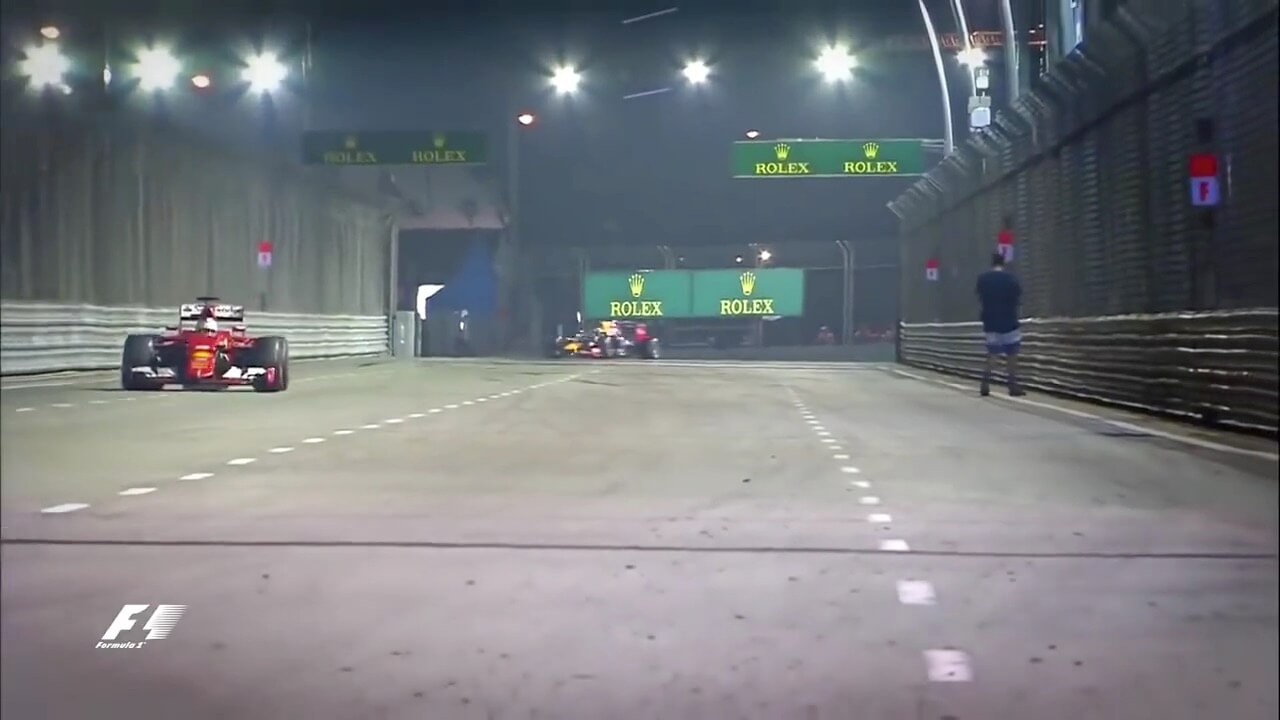
出典:youtube.com
When the safety car is deployed
When the safety car is deployed, it waves yellow flag and displays SC board at all observation posts. Overtaking the other cars is prohibited throughout the course. Overtaking the safety car is also prohibited.
It waves yellow flag and displays SC board at all observation posts at all observation posts.
It is prohibited overtaking.
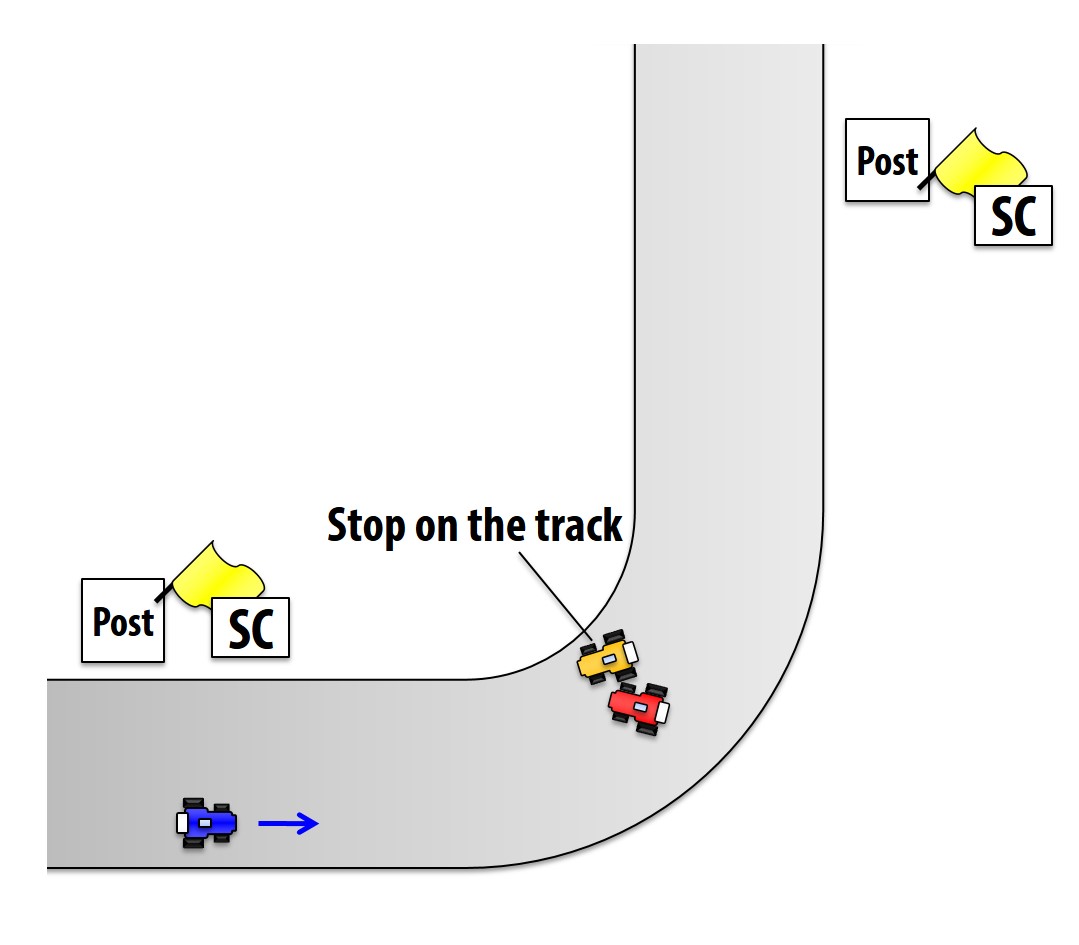
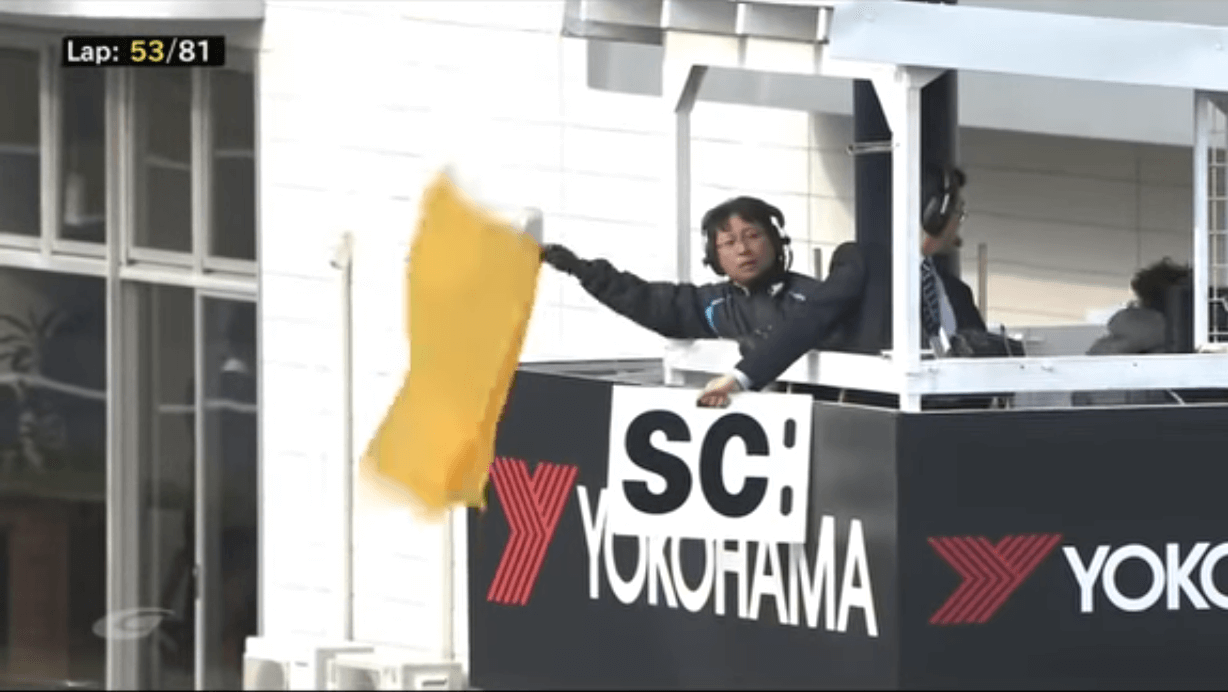
出典:youtube.com
The safety car in the course
When the safety car is deployed, it will interven the course from the pit road exit. The safety car is often placed in front of the top car rather than randomly entering the course. This is because when ending the safety car, it wants the top car to restart at the top of cars, taking into account race situation.
Cars run in a row with the safety car at the top
The safety car runs at controlled speed. Therefore, if it repeats the laps, a line of cars with the safety car at the top will be formed. The distance between vehicles must be within 5 cars as a guide. It is prohibited to drive unnecessarily widened between the car in front and the car behind.
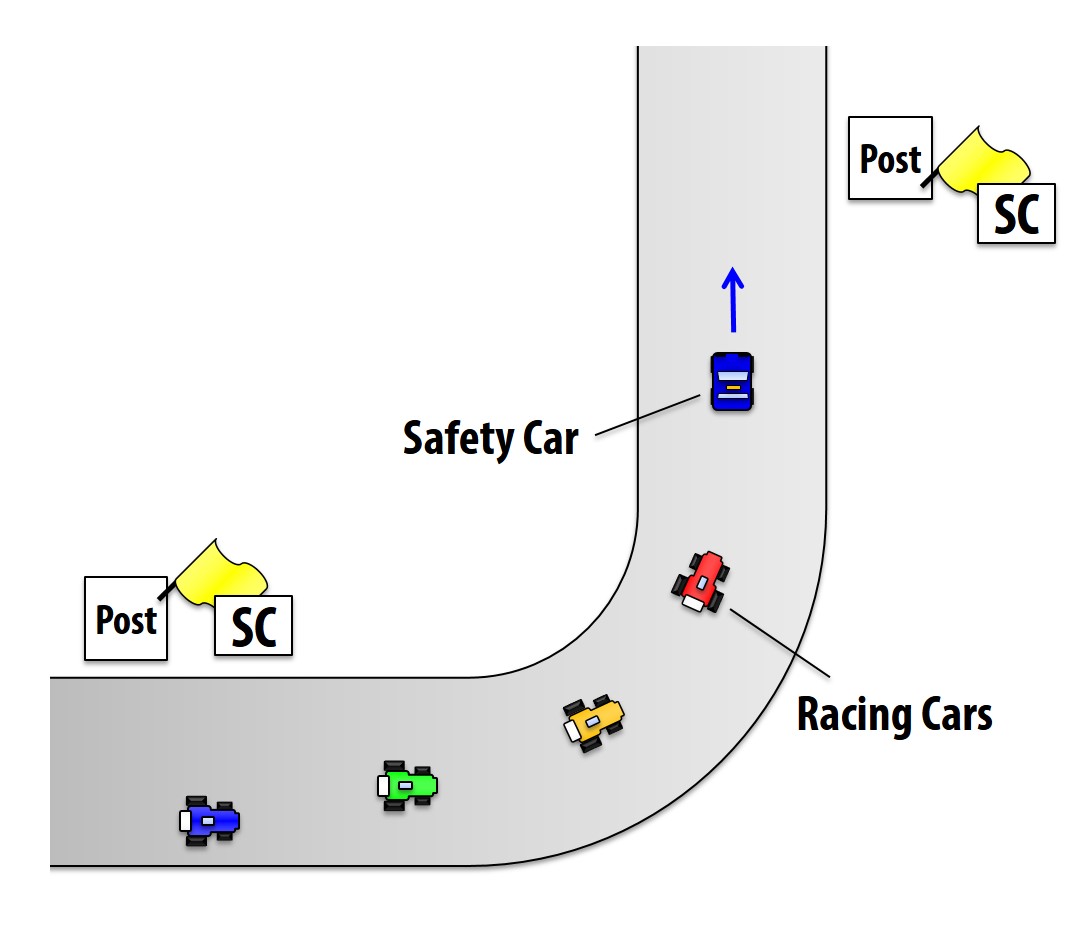
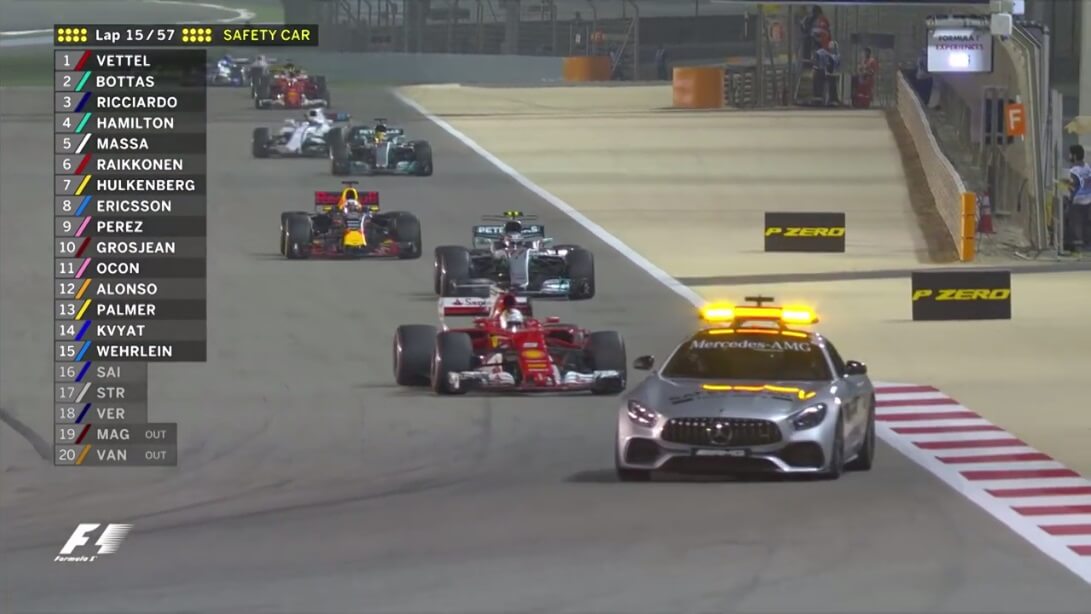
出典:youtube.com
Decelerate and drive while the safety car deployed
During the deployment of the safety car, the entire course is treated in the same way as the yellow flag zone. For this reason, it may be penalized for spinning or leaving the course.
The safety car may drive on pit road
If passing on the main straight is difficult due to an accident, the safety car may runs the pit road instead of the main straight.
In that case, the safety car enters the pit road and drive on the pit road. Subsequent cars must also drive on the pit road following the safety car.
The position does not change, but the time gap eliminates
If the safety car is deployed, overtaking on the course is prohibited. However, as the safety car takes the lead, the car speed becomes slower, so time gap eliminates with the car behind.
Therefore, after the safety car is removed, the race will be close.
Virtual Safety Car (VSC) in Formula 1 and Full Course Yellow (FCY) in WEC are not the lead run by the safety car. By limiting the sector time and car speed of all cars on the course, it succeeded in letting the cars down speed while keeping the time gap of each cars without suspending the race.
In case of being permitted to pass the safety car
During the deployment of the safety car, cars run under the leading by the safety car.
However, there are cases that are permitted to pass the safety car.
- When instructed by the safety car
- In case the safety car that pit out does not exceed the safety car line 2, when the safety car was deployment.
- In case the safety car that pit in exceed the safety car line 1 when restarting the race.
If the car behind the safety car is not the top, the safety car may instruct the car to go ahead. If the race resumes as it is, there would be cars that are lapped down in front of the top car. So this is a response considering the race development.
The safety car may turn on a green light. This is a signal that it is permitted to pass the safety car. At this time, cars running behind the safety car can pass the safety car.
What’s the “Safety Car Line” ?
In case that overtaking is permitted during the safety car
During the safety car deployment, it is prohibited overtaking to other cars. But there are some cases that it is permitted to overtake.
- In case the car that pit in exceed the safety car line 1.
- At the safety car start, cars that are a little late when leaving the own grid can overtake and return to their previous positions.
Pit in during the safety car deployment
In the International Sporting Code Appendix H, it is permitted to pit in during the safety car deployment. In some race categories, such as SUPER GT, it is prohibited pitting in during the safety car deployment. At that time it is described in the supplementary regulations.
When the safety car is deployed, the time gap between cars will be eliminated.Even if it makes a pit stop and do pit work, it can quickly recover the lost time. Therefore, when the safety car is deployed, drivers who have not made a pit stop often pit in all at once.
Many drivers make pit stops when the safety car is deployed. At this time, if it does not make a pit stop, it can greatly improve the position. Instead, it needs to make a pit stop after the safety car ending. If the pit stop had already been completed before the safety car is deployed, it would be possible to greatly improve the position. It would be advantageous.
Pit road exit closure
When the cars leaded by the safety car through the main straight, the pit road exit signal turns red. During that time, it is not able to pit out.
After the cars leaded by the safety car passes, the signal turns green. And, it is permitted to pit out.
In case two safety cars are deployed
On circuits where the distance of one lap exceeds 7km, two safety cars may be permitted to deploy on the course. The second safety car enter from not the pit road exit, but predetermined middle point of the course.
When the safety car is removed, second safety car does not enter the pit road. The second safety car outs the course from intermediate point. There is a safety car line at this point. This line is called “intermediate safety car line”.
Car speed of the safety car
When watching TV, the car speed of the safety car seems to be much slower than the racing cars, but it actually runs at a speed of approximately 100km/h. In Formula 1, the safety car need to run at very high speed.
The driver of the safety car need to have high driving skills because he must keep running without having to spin or over run even in heavy rain.
The car speed of the safety car is not always constant, immediately after the safety car is deployed, the safety car reduces the speed to form the line of the cars. When the restart of the race is approaching, the safety car ups the speed to warm the temperature of the tires of the race cars. Like this, the safety car runs at different car speed according to the condition.
In particular, after the safety car turns orange rotating light off to restart the race, the safety car is necessary to drive fully open to broad the distance between the race cars.
Safety car ending procedure
During the safety car deployment, the stopped cars will be removed from the course for the restart of the race. Once the danger on the course has been removed, the safety car will be ended and the race will resume. Click here for the procedure of the safety car ending.
Regulations of Safety Car Operation

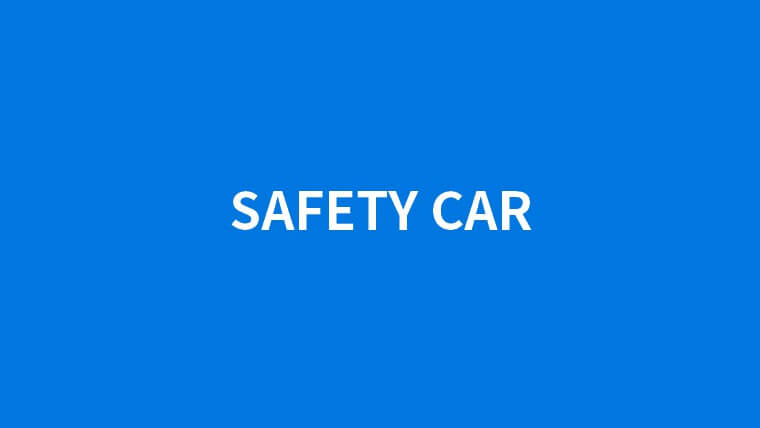
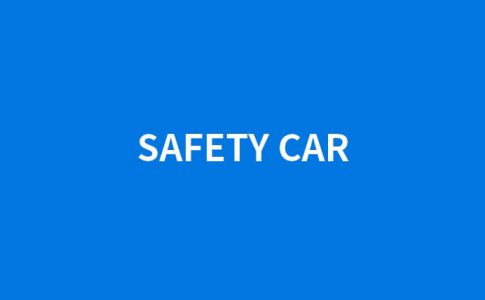


















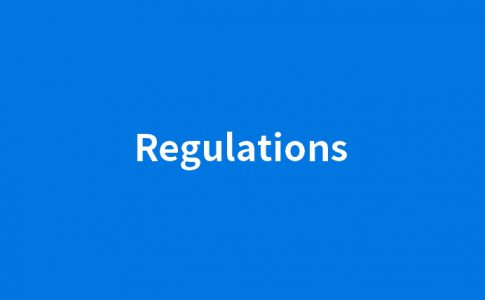

2.10 SAFETY CAR PROCEDURES
(EXCEPT FOR FIA CHAMPIONSHIPS, SERIES OR CUPS WITH SPECIFIC REGULATIONS)
NEUTRALISING THE RACE
2.10.8 When the order is given to deploy the safety car, all marshal posts will display waved yellow flags and “SC” boards and the orange lights at the Line will be illuminated, for the duration of the intervention.
2.10.9 The safety car will start from the pit lane with its orange lights illuminated and will join the track regardless of where the race leader is.
2.10.10 All the competing cars must then form up in line behind the safety car no more than five car lengths apart, and overtaking, with the following exceptions, is forbidden until the cars reach the Line (or the next race neutralisation end point) after the safety car has returned to the pit lane. Overtaking will be permitted under the following circumstances:
2.10.11 Any car being driven unnecessarily slowly, erratically or in a manner deemed potentially dangerous to other drivers at any time whilst the safety car is deployed will be reported to the stewards. This will apply whether any
such car is being driven on the track, the pit entry the pit lane, or the pit exit.
2.10.12 When ordered to do so by the Clerk of the Course, the observer in the safety car will use a green light to signal to any cars between it and the race leader that they should pass.
These cars will continue at reduced speed and without overtaking until they reach the line of cars behind the safety car.
The safety car may also have an electrically controlled rear panel which will show the race leader’s number. When it is illuminated, cars up to but excluding the race leader, whose number is displayed, will pass the safety car.
2.10.13 The safety car shall be used at least until the car in the lead is behind it and all remaining cars are lined up behind the leader (or, when there is more than one safety car, all the cars in that safety car’s sector).
Once behind the safety car, the race leader (or leader of that sector) must keep within 5 car lengths of it (except as under Article 2.10.15) and all remaining cars must keep the formation as tight as possible.
2.10.14 While the safety car is in operation, competing cars may enter the pit lane, but may only rejoin the track when the green light at the end of the pit lane is on. It will be on at all times except when the safety car and the line of cars following it are about to pass or are passing the pit exit. A car rejoining the track must proceed at an appropriate speed until it reaches the end of the line of cars behind the safety car.
Under certain circumstances, the Clerk of the Course may ask the safety car to use the pit lane. In this case, and provided its orange lights remain illuminated, all cars must follow it into the pit lane without overtaking. Any car
entering the pit lane under these circumstances may stop at its designated garage area.
2.10.15 When the Clerk of the Course calls in the safety car, its orange lights will be extinguished; this will be the signal that it will be entering the pit lane at the end of that lap.
At this point, the first car in line behind the safety car may dictate the pace and, if necessary, fall more than five car lengths behind it.
In order to avoid the likelihood of accidents before the safety car returns to the pit lane, from the point at which the lights on the car are extinguished, drivers must proceed at a pace which involves no erratic acceleration, braking, or any other manoeuvre which is likely to endanger other drivers or impede the restart.
As the safety car is approaching the pit entry, the yellow flags and SC boards at the marshal posts will be withdrawn and replaced by waved green flags with green lights at the Line and at the Intermediate race neutralisation end point(s).
These will be displayed until the last car crosses the Line.
In the case of more than one safety car, their withdrawal must be precisely synchronised.
2.10.16 Each lap completed while the safety car is deployed will be counted as a race lap.
2.10.17 If the safety car is still deployed at the beginning of the last lap, or is deployed during the last lap, it will enter the pit lane at the end of the lap and the cars will take the chequered flag as normal without overtaking